Infrastructure deficiencies, policy, governance and animal welfare services challenge industry’s growth
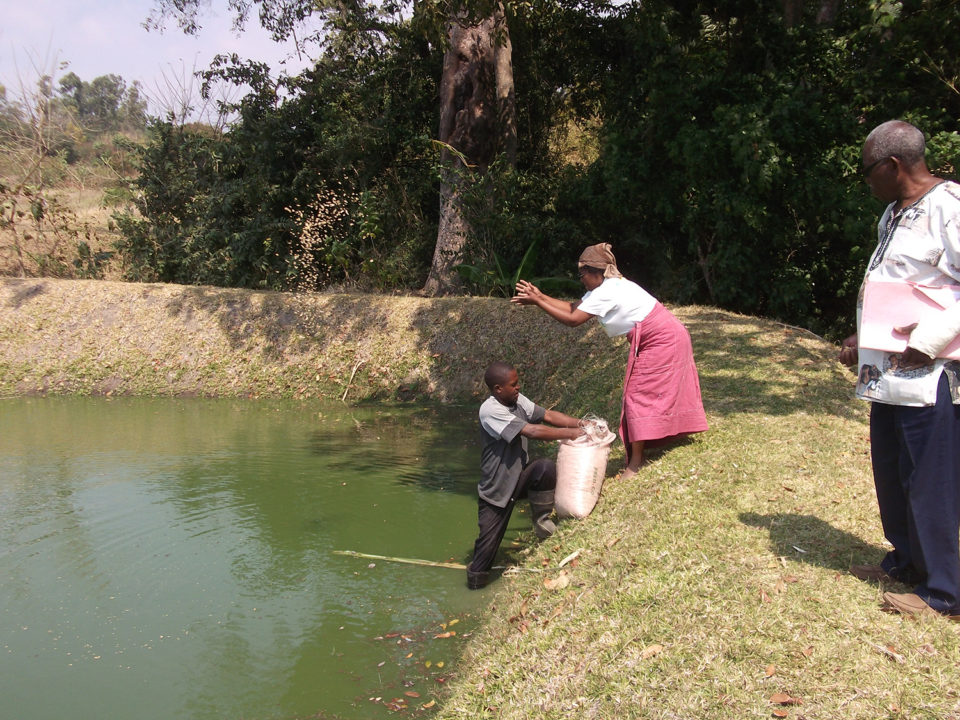
The first of seven aspirations, as laid out by the African Union in its ambitious report, Agenda 2063: The Africa We Want, is really quite simple: “A prosperous Africa based on inclusive growth and sustainable development.”
To some observers, the four decades-plus until that end date may not be enough time for Africa to solve its vexing riddles of food security, poverty and infrastructure deficiencies to reach prosperity. Despite recent failures, a growing number of industry observers inside and outside the African continent – a vast land comprising 55 nations – believe aquaculture is a huge part of its future. Farming fish, shellfish and sea plants could be the essential building block for a thriving, globally competitive and industrialized economy that Africa seeks for itself.
With abundant water resources, low-cost labor and a variety of climates suitable for growing a wide range of aquatic species, both freshwater and marine, Africa boasts many strengths to foster tremendous growth for aquaculture. It’s even tempting to envision Africa following in the footsteps of so many Asian nations that have embraced not only aquaculture but value-added seafood processing, thereby fueling exports, creating jobs and advancing economies.
But does Africa want to be a “new Asia,” in terms of aquaculture development?
Clifford Spencer, chairman of Aquaculture without Frontiers, believes there is great potential to ramp up the industry – quickly. Spencer, who serves as goodwill ambassador for NEPAD, the New Partnership for Africa’s Development, based in Midrand, South Africa, said the continent’s leaders also realize that expanding agriculture and aquaculture could speed their nations’ industrial evolutions.
Spencer recently addressed growing the aquaculture industry in Africa at the World Aquaculture Society (WAS) annual meeting in Cape Town, South Africa, and soon after told the Advocate that there’s a huge opportunity for the continent to do aquaculture right, “on the first go,” while avoiding mistakes made in Asia and elsewhere.
“The fundamental message is aquaculture is growing quickly, but it’s growing from a very low base. The population is there, the demand for fish and shellfish is there,” said Spencer.
According to the United Nations’ Food and Agriculture Organization, aquaculture accounted for 1.9 million metric tons of production in 2015, making the region by far the lowest producer in the world, behind Asia, the Americas, Europe and Oceania. As a result, the people of several African nations are among the world’s lowest per-capita seafood consumers. NEPAD contends that, on numerous fronts, aquaculture production must grow 10 percent annually over the next 15 years. To reach that goal, Africa will need the global community’s support.
“But there needs to be a basic approach to begin with. When you get out to the remote areas of sub-Saharan Africa, it’s such a different place. The raw material is there: Each of these countries has hundreds of thousands of miles of rivers, some not being used at all; large lakes and even large hydroelectric schemes not being used, by and large. Ghana, Nigeria and South Africa are, maybe, but even in those cases, our Chinese cousins have already had a go, and what they’ve offered in return for getting the contracts or getting the goods hasn’t quite been what [others] could offer; things that last and make a real difference.”
Pockets of excellence, not passion projects
Count Gavin Johnston among those who are tapping the brakes on any notion that Africa, with so many highly variable and underdeveloped lands, can become the “next Asia” of aquaculture, as it stands a relatively untapped frontier for fish farming.
Johnston is partner with Aquaculture Consulting and Management Services in South Africa, which serves as a link between financiers and commercial projects focusing on trout, abalone and tilapia farming in East and Southern Africa. He believes that Africa is a “difficult” continent on which to develop aquaculture, for many reasons, not the least of which is its often-tense political climate.
Africa wants this because it will create food security, food safety, income generation or foreign export savings through reducing imports and job creation.
“Regionally, yes, there is likely to be some big uptake but many areas will remain politically riven with focus on more extractive industry,” Johnston said. “The East African dream is for 200,000 [metric] tons [of tilapia] around Lake Victoria by 2030. If this target is reached then this will be a big success story but it will be mostly driven by industrial producers with ‘big’ capital. This can be contrasted with much of Asian production, which is mostly small-scale. I have visited the Chinese model that’s been vaunted in Africa where some ponds are provided at each village and the government provides juveniles and some feed. They always fail, mostly because someone steals the fish.”
Big capital, he added, can be scared away by a number of factors, like unclear policy and spotty governance. Additionally, he said, long-term land and water usage rights and title can be tricky to secure, which investors don’t like, and failing to get a commitment from government for VAT relief on feed imports and export tariffs is a mistake that investors should avoid. But the worst is that massive industry expansion, without sufficient animal welfare and veterinary capacity, could bring on a devastating disease.
“Imagine that 200,000-ton industry, on one lake, which is made of three countries and Tilapia Lake Virus gets in,” said Johnston. “Contrast this with [Infectious Salmon Anemia, or ISA] in Chile, where good regulation was brought in, and was controlled by one government.”
Johnston envisions “pockets of excellence” throughout Africa, with large vertically integrated companies controlling resources. But as for the overarching goals in the “2063” agenda?
“It all depends on whose thumb is being sucked,” said Johnston. “Egypt is already on 1 million tons. We should see 500,000 tons in East Africa and the same in West Africa. Add in growth and I would think that 5 million tons would be something to be proud of.”
Naga Murali Chalamalasetti, managing director at Volta Breams in Ghana, said Africa often represents a “golden opportunity” for investors, at least for the first few years, until mistakes ultimately surface.
“Very few people select the right species and the right production system, do a proper business plan, establish a value chain and then start the business,” said Chalamalasetti, whose company does consultancy work for aquaculture projects in Ghana, Nigeria, Tanzania and Jordan. “Most of the investors start this business with passion rather than looking at it as a real business opportunity. They will fall into the hands of half-baked consultants and experts and ultimately what we get and what we expected will be like the distance between the moon and Earth and the distance between the sun and the Earth. These guys invest, lose, and leave the business.”
Make no mistake, he said: Africa wants what Asia has. But any project in Africa, he urged, needs to start with an understanding of the local environmental, business and political conditions.
“Yes, it’s real. Africa wants this because it will create food security, food safety, income generation or foreign export savings through reducing imports and job creation,” he said.
Just do your homework first.
“Don’t come to Ghana to do vannamei shrimp farming just because land is good and sea water is there, only to learn that Ghana doesn’t allow importation of foreign strains,” he said. “Don’t decide the stocking density in a pond without knowing the carrying capacity of that particular area.”
Putting Africa on the aquaculture map
There are many misconceptions about Africa – about its lands, its people and their capabilities – and Spencer said that even experts underestimate the continent’s potential for growing not only enough food for its own people, but ultimately enough volume to tap into export markets. With heightened interest among investors these days, he hopes for patient, holistic developments that allow the people of Africa time to adapt.
“They’ve suffered from a colonial mentality, but they’re now inviting back previous colonial countries and new ones to be partners with them in developing science and technology,” Spencer said. “Africa has a lot of bright doctors, for example, but they need technology, they need proper storage facilities to keep vaccines cold. Infrastructure is what’s holding them back; it’s not the people, their quality or their potential. There have been so many [social] initiatives that have gone wrong because Western ideas have been applied, ruthlessly sometimes, without allowances for cultural differences that we need to understand, work with and develop.”
The global aquaculture community is paying greater attention to Africa. The first-ever World Aquaculture Society (WAS) annual conference was held in Cape Town, South Africa, in late June, which the organizers believe is a clear message that the time has come to grow the industry on the continent.
“I would not say that Africa is the last frontier but it is definitely a frontier to engage and grow aquaculture. Even in the United States and Latin America, we have not met the potential for aquaculture and face many challenges to allow the industry to grow, especially in offshore locations,” said William Daniels, WAS president and acting director of global programs for the College of Agriculture at Auburn University in Alabama, USA, which boasts a world-renowned aquaculture program.
Daniels said investors must recognize challenges in aquaculture development unique to Africa, including feed and feed ingredient accessibility, regulatory challenges, lack of a skilled labor force, transportation issues and others.
“With a clear picture, investors will be more able to find the right opportunities and develop the critical mass to allow economies of scale. It is time to re-evaluate the potential of aquaculture in Africa and make the necessary investments.”
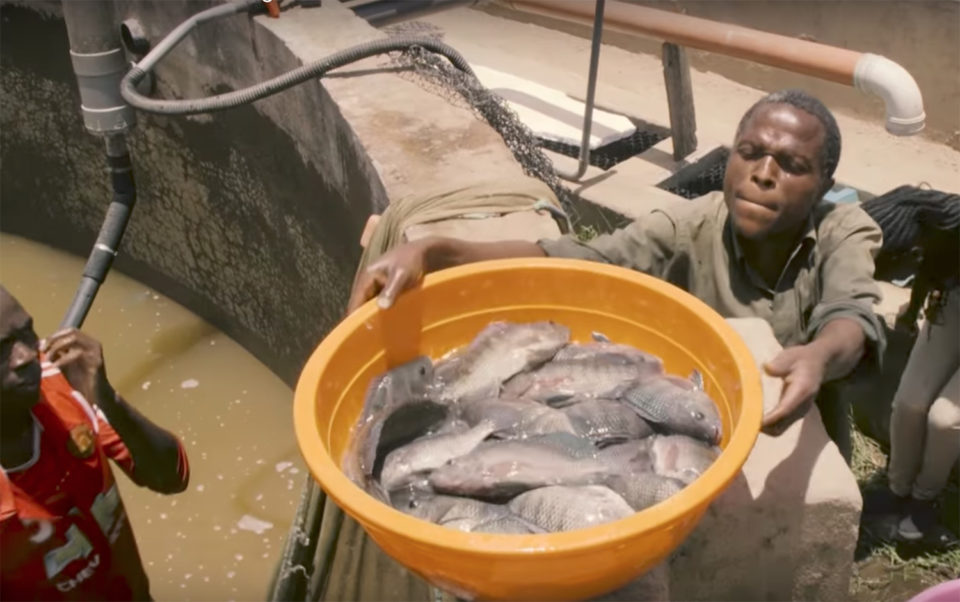
One of those crucial challenges – feed accessibility – is being addressed in Kenya by a Kenyan-Dutch public-private partnership called FoodTechAfrica. In June, the organization celebrated the opening of the Unga Holdings Ltd. fish feed factory in Nairobi, the first of its kind in East Africa. A collaboration involving fish feed giant Skretting, the factory can produce 5,000 metric tons of extruded, floating fish feed for the African market.
And who knows? What Africa now lacks could be its advantage tomorrow, in what is known as a “technology hop” – much like what happened in parts of Asia, where new technologies were adopted quickly and traditional, expensive infrastructure that was always lacking (think telephone lines) was suddenly no longer necessary.
“It’s a bit like mobile phones,” he said. “The mobile phone banking center of the world is now in Nairobi. It just shows what can be done.”
Read part two by clicking here.
Follow the Advocate on Twitter @GAA_Advocate
Now that you've reached the end of the article ...
… please consider supporting GSA’s mission to advance responsible seafood practices through education, advocacy and third-party assurances. The Advocate aims to document the evolution of responsible seafood practices and share the expansive knowledge of our vast network of contributors.
By becoming a Global Seafood Alliance member, you’re ensuring that all of the pre-competitive work we do through member benefits, resources and events can continue. Individual membership costs just $50 a year.
Not a GSA member? Join us.
Author
-
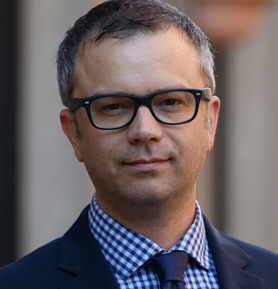
James Wright
Editorial Manager
Global Aquaculture Alliance
Portsmouth, NH, USA[103,114,111,46,101,99,110,97,105,108,108,97,101,114,117,116,108,117,99,97,117,113,97,64,116,104,103,105,114,119,46,115,101,109,97,106]
Tagged With
Related Posts
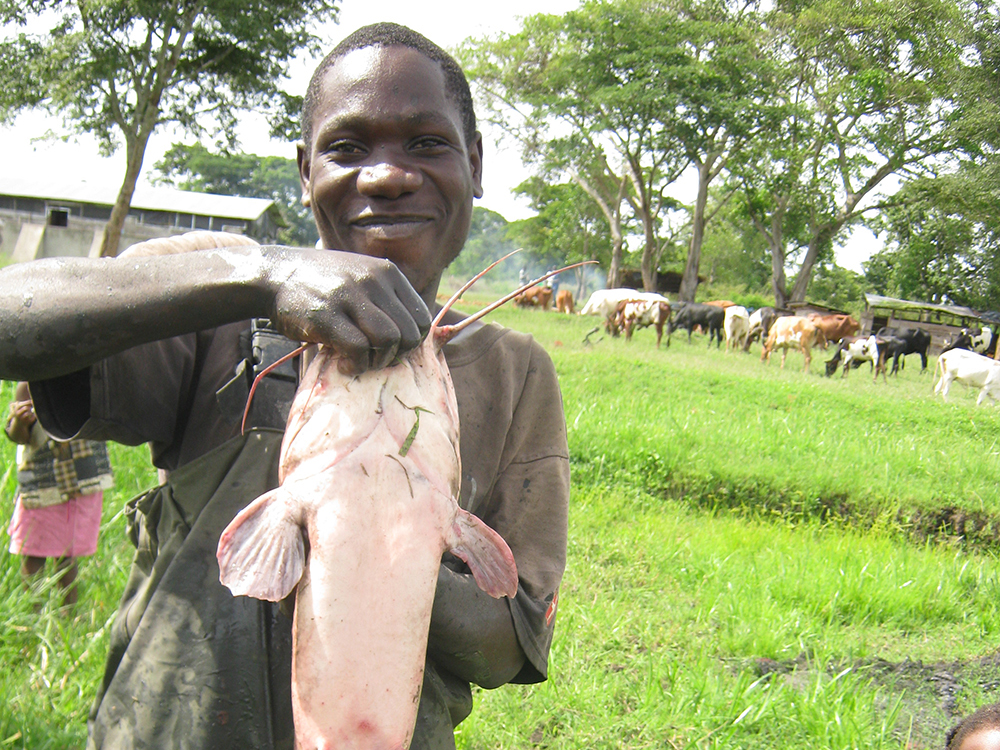
Innovation & Investment
Investing in Africa’s aquaculture future, part 2
Africa offers innumerable opportunities and a raft of challenges for developing a modernized aquaculture industry. Investors are interested, and pursuing with cautious optimism.
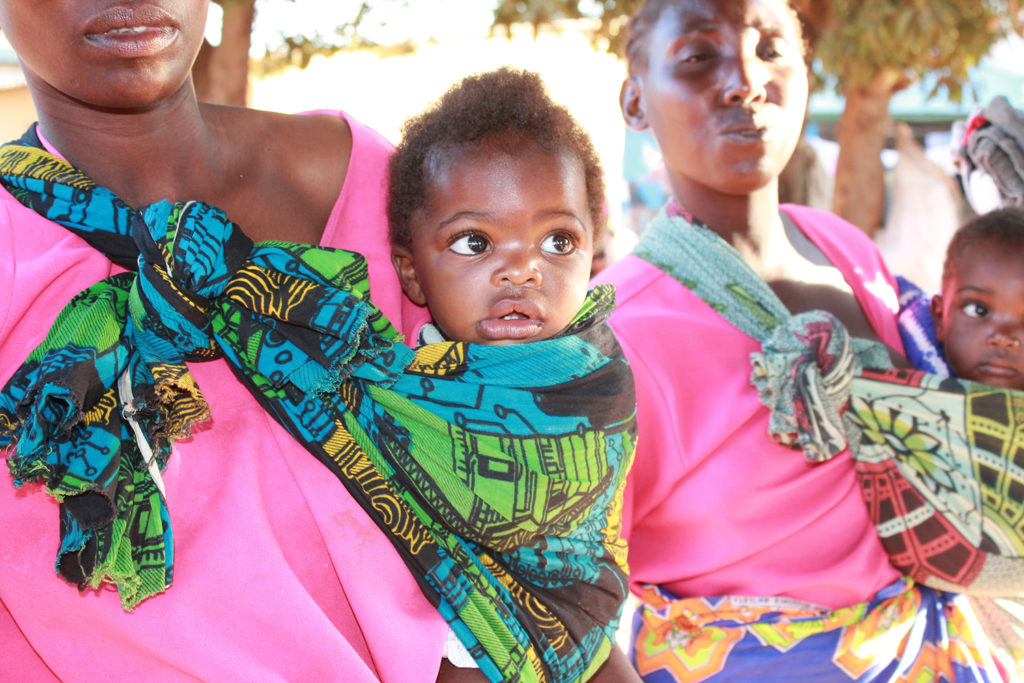
Responsibility
An African prison where fish will be farmed and lives saved
A nonprofit organization working to improve conditions in African prisons is hoping tilapia ponds, tended to by inmates, will aid in their nutrition. A small donation from the Global Aquaculture Alliance will go a long way.
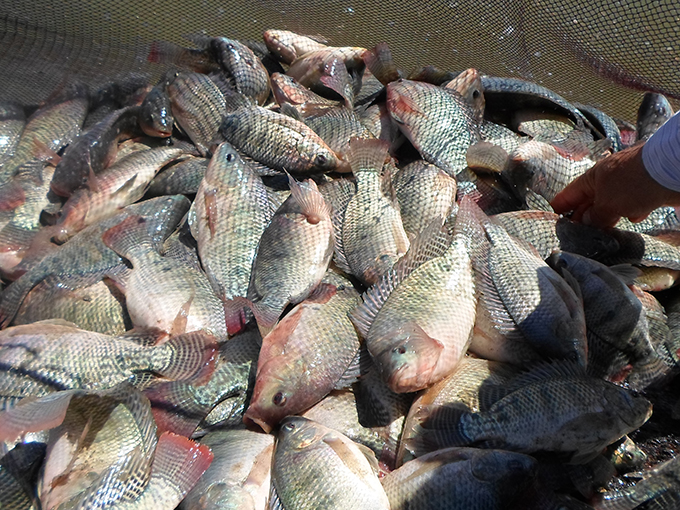
Responsibility
Egypt’s success with tilapia a blueprint for all Africa
Egypt is the third-largest tilapia producer globally, after China and Indonesia, and accounts for about 80 percent of African production of farmed tilapia. Many of the reasons for Egypt’s successful development of its important tilapia industry could be applied to the rest of African continent.
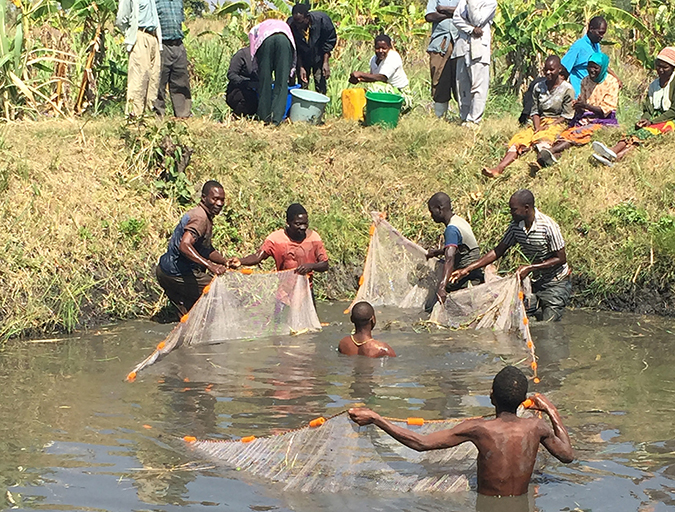
Responsibility
Images: Small-scale aquaculture emerging in Africa
A study by University of Southampton Ph.D. candidate Alison Sky Simmance aims to investigate the role of small scale aquaculture in Malawi, a country where the demand for farmed fish is becoming more urgent in light of declining capture fisheries and high dependency on fish a vital source of animal protein.

